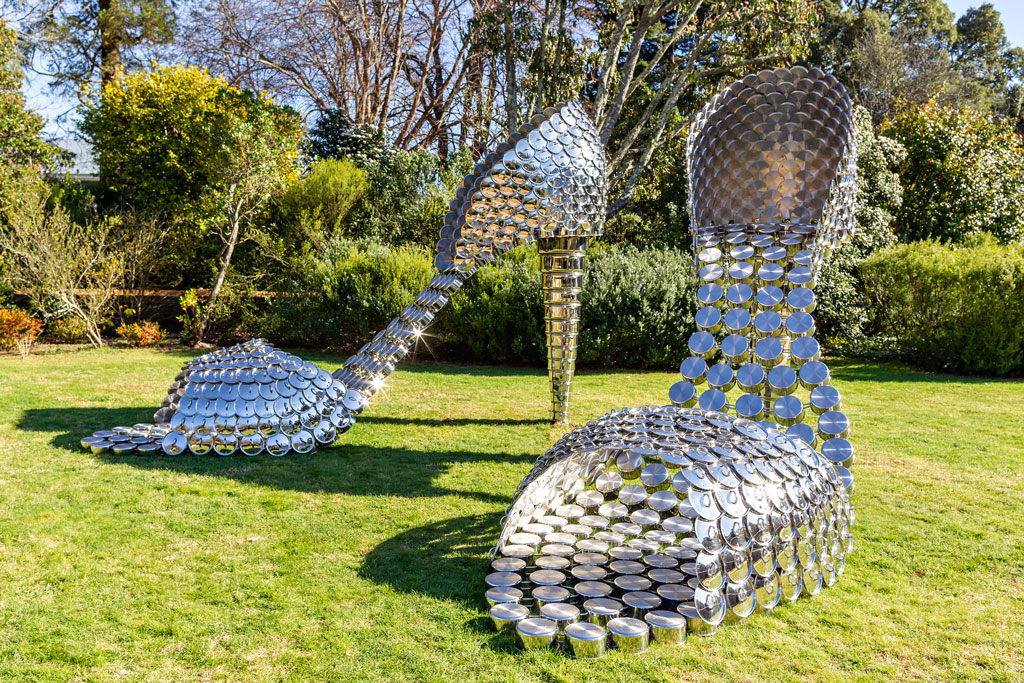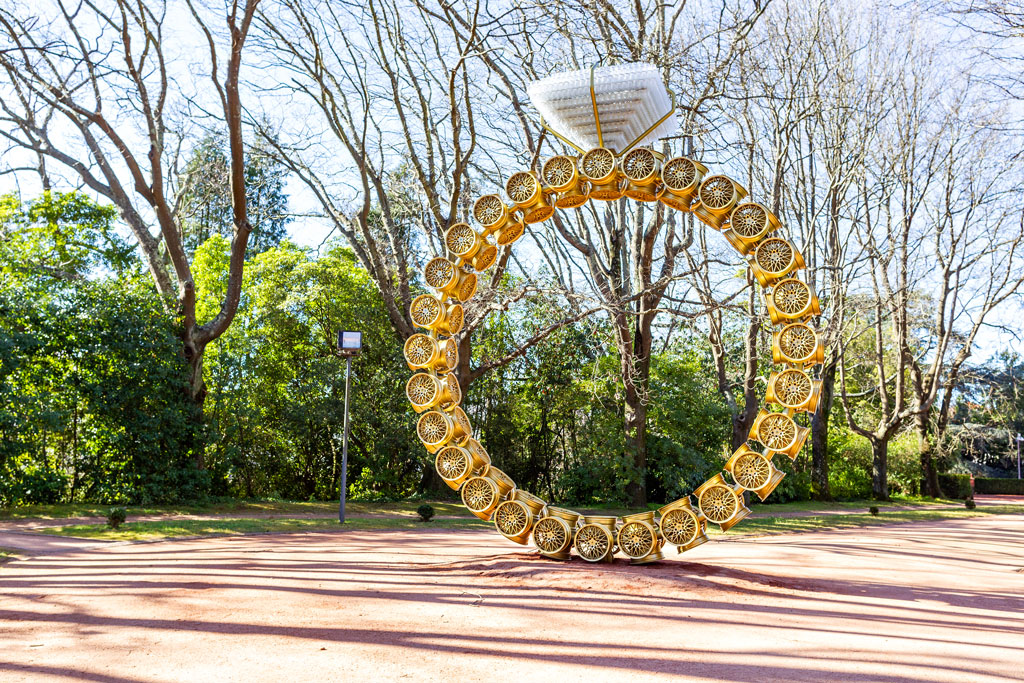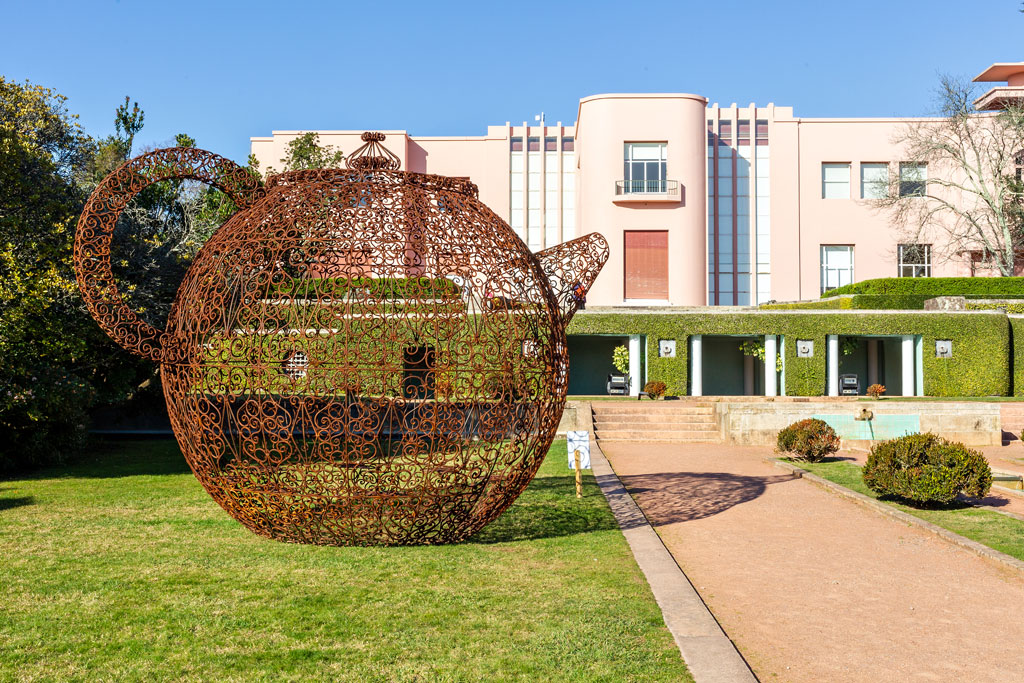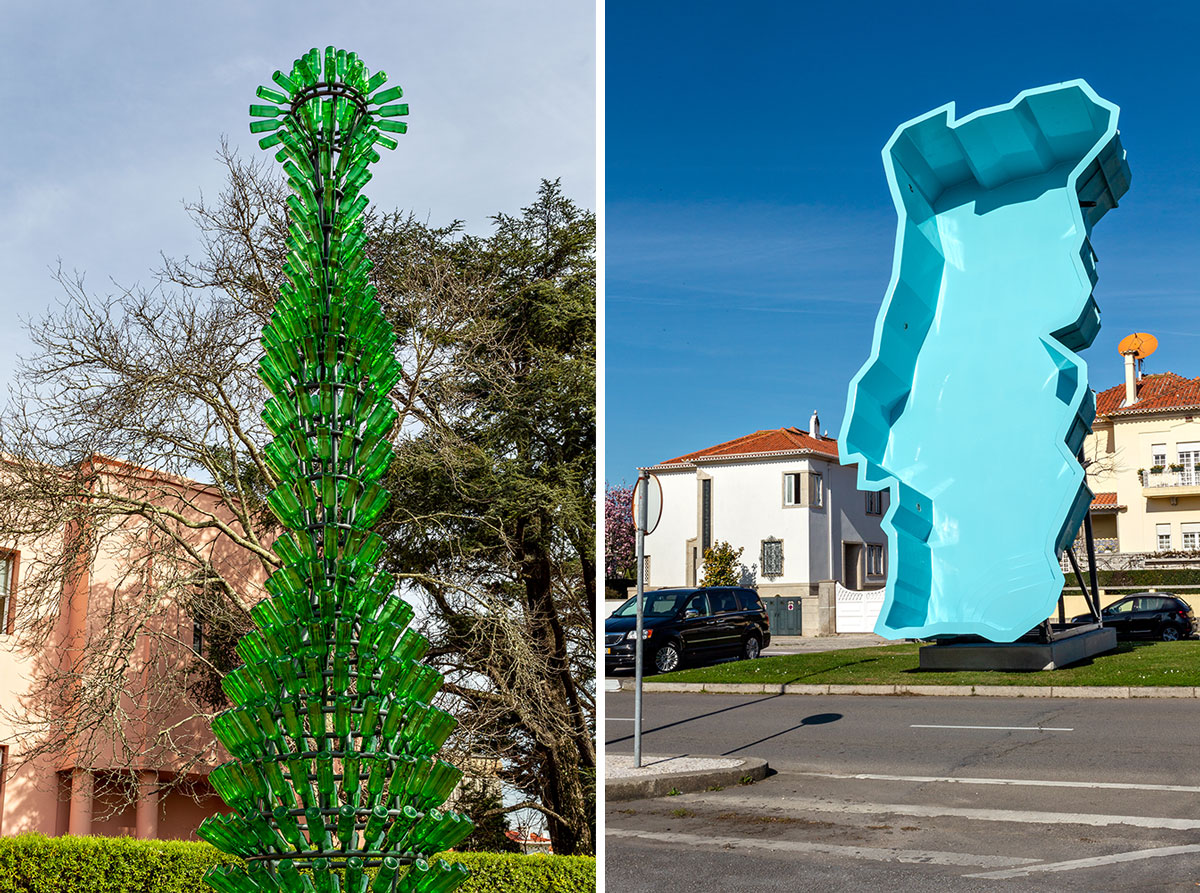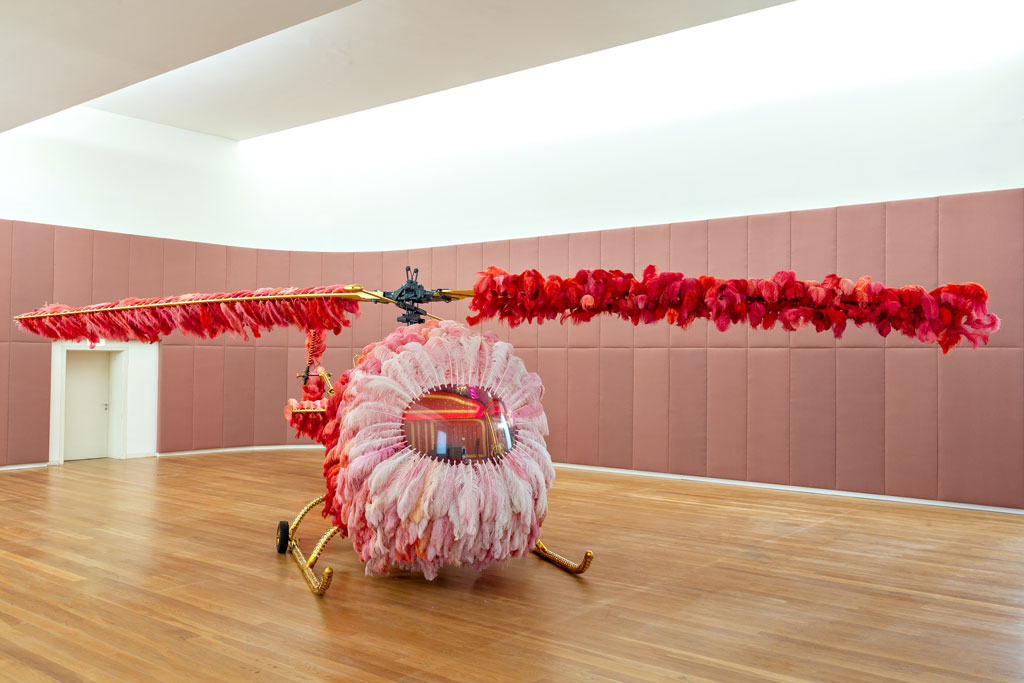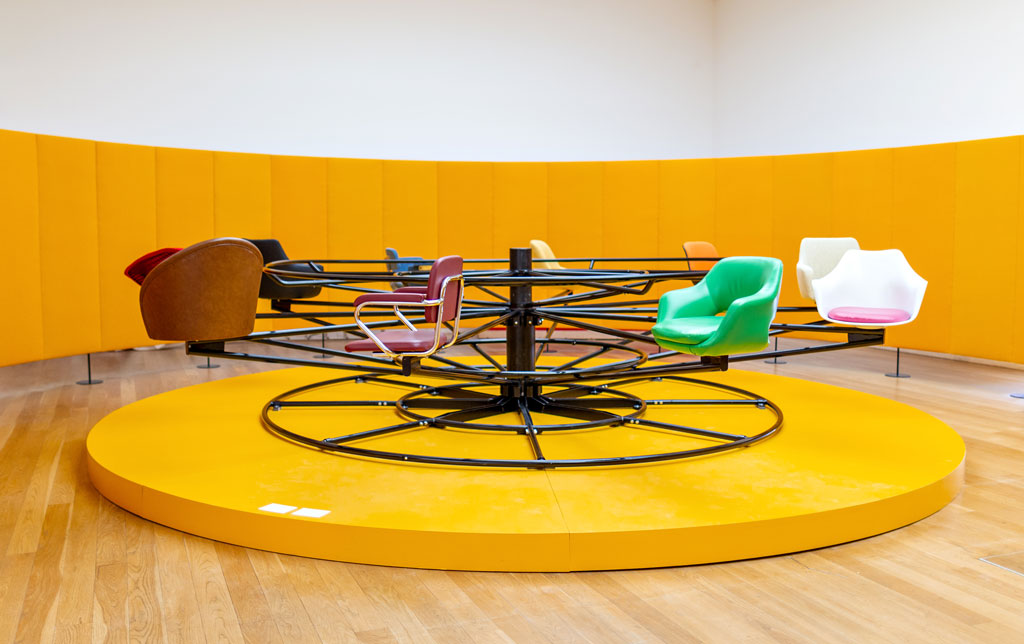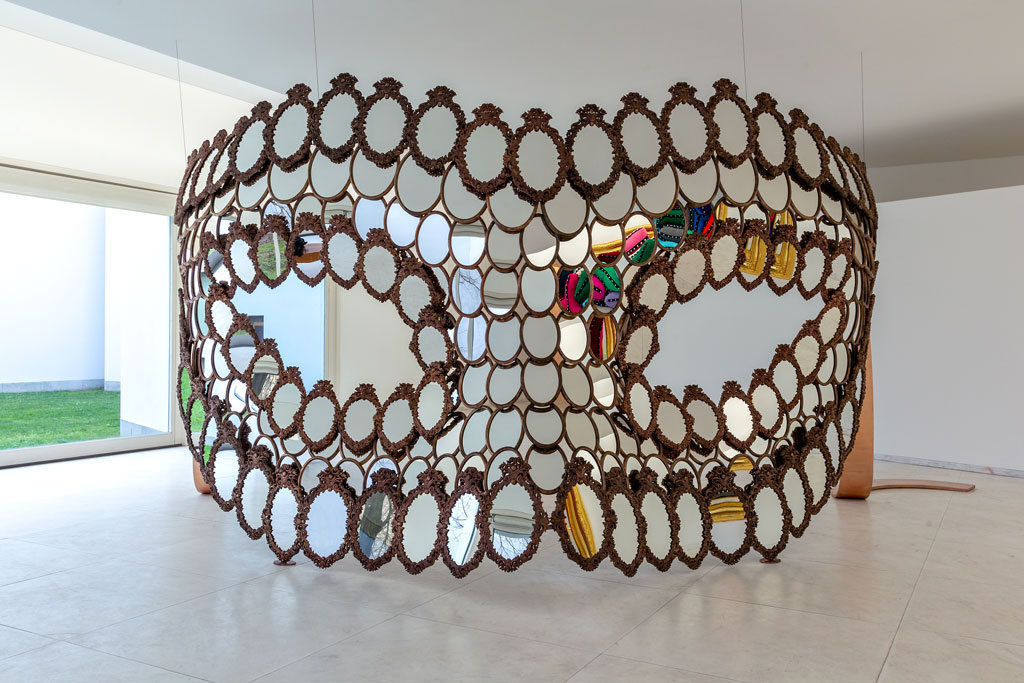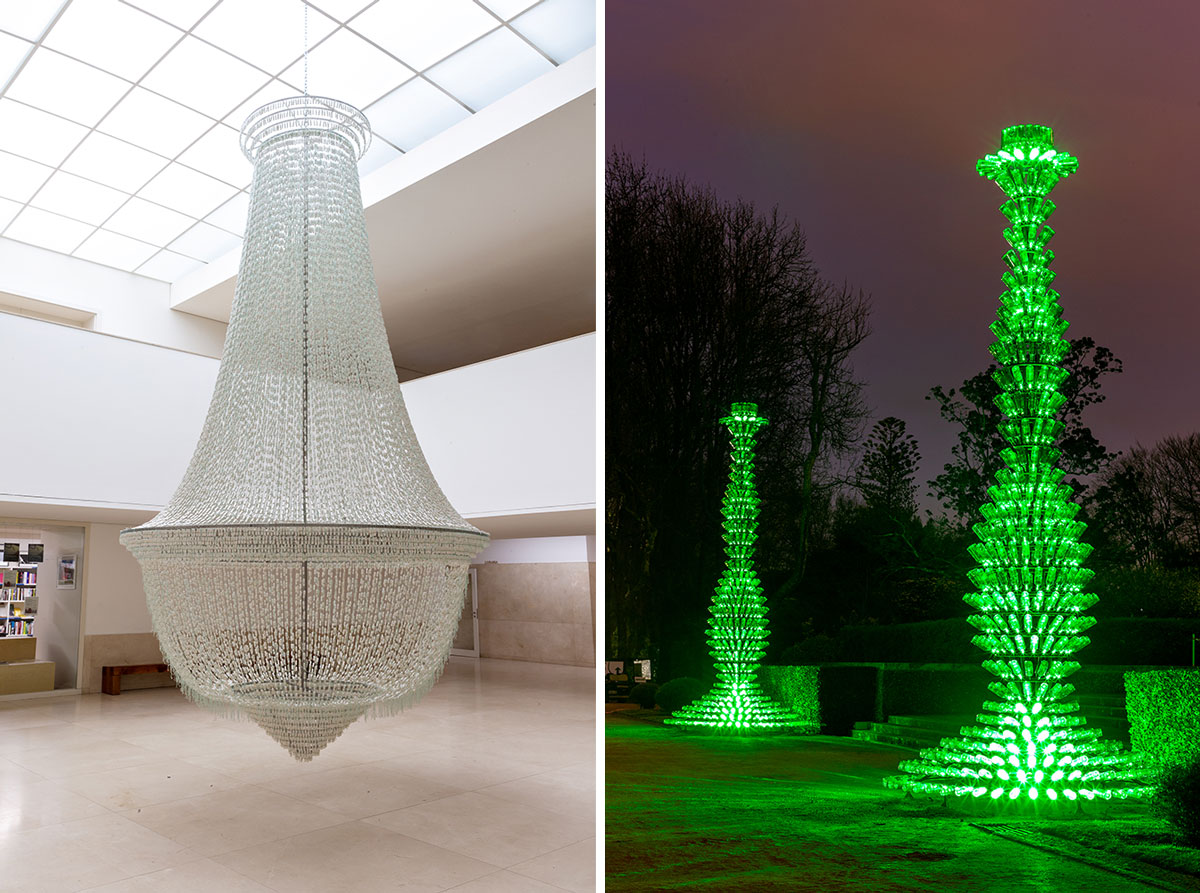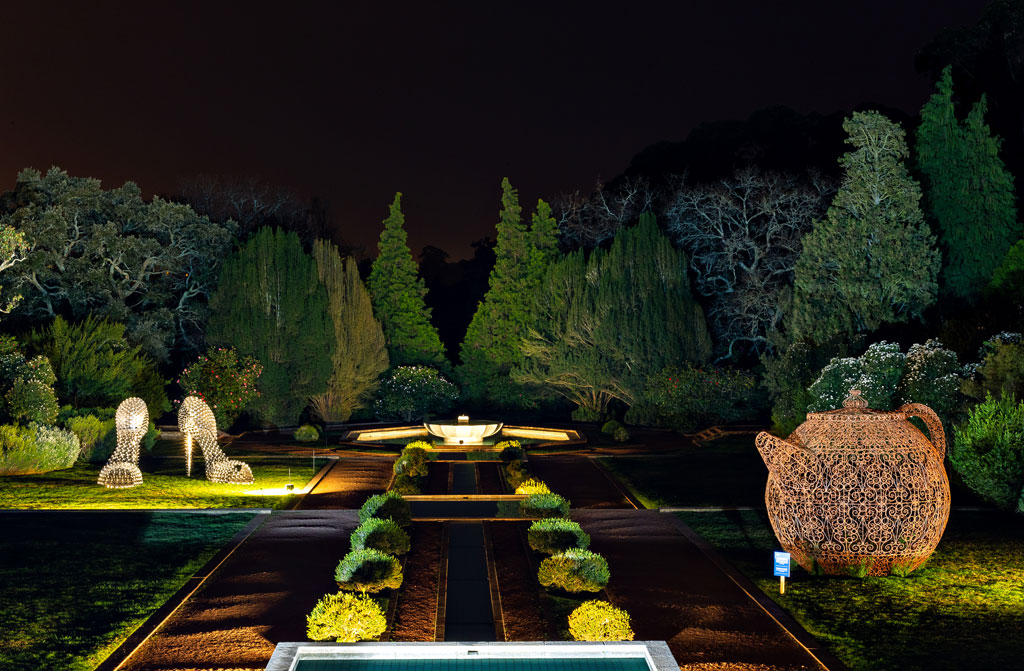ART-PRESENTATION: Joana Vasconcelos-I’m Your Mirror
 Through the construction of light-hearted yet strikingly direct images that refer to socio-political issues relevant to post-colonial, globalized and consumerist societies, Joana Vasconcelos addresses topics ranging from immigration to gender violence. Her work became known internationally after her participation in the 51st Venice Biennale in 2005, with “A Noiva” (2001-05).
Through the construction of light-hearted yet strikingly direct images that refer to socio-political issues relevant to post-colonial, globalized and consumerist societies, Joana Vasconcelos addresses topics ranging from immigration to gender violence. Her work became known internationally after her participation in the 51st Venice Biennale in 2005, with “A Noiva” (2001-05).
By Dimitris Lempesis
Photo: Serralves Museum of Contemporary Art Archive
Joana Vasconcelos in her solo exhibition “I’m Your Mirror” at Serralves Museum and Park, presents a selection of thirty works produced between 1997 and the present day, including a site-specific installation for the Atrium of the Museum and various other new works. Some of her works are extraordinarily complex: they move, make sounds, or light up. Vasconcelos uses a wide variety of materials from everyday life to make these works, such as household appliances, tiles, fabrics, pottery, bottles, medicines, urinals, showers, kitchen utensils, telephones, cars, and plastic cutlery. With them the artist constructs light-hearted yet strikingly direct images that refer to socio-political issues relevant to post-colonial, globalized and consumerist societies, addressing issues that range from immigration to gender violence. In addition to some of Vasconcelos’ most iconic works such as” “Valium Bed” (1998), “The Bride” (2001-05), “Burka” (2002), “Red Independent Heart” (2005), “Marilyn” (2011) and “Lilicoptère” (2012). the exhibition includes new works specifically created for this occasion, such as “Finisterra”, “I’ll Be Your Mirror”, or “Solitaire” (all 2018). The exhibition continues throughout the gardens of Serralves Park with the display of several monumental outdoor sculptures. Intertwining references to Portuguese popular culture with allusions to the history of art, Joana Vasconcelos’ artistic production approaches serious issues, with a disarming sense of humour, such as the exploitation of women, migrations and the impacts of colonialism. Joana Vasconcelos’ creative process is based on appropriation, decontextualization and subversion of pre-existing objects and realities of daily life. Her sculptures and installations, that reveal a keen sense of scale and mastery of colour, and her use of performance and video or photographic records, help materialise challenging concepts associated to daily routines. Using ingenious operations of displacement, reminiscent of the ready-made and the grammars of Nouveau Realisme and Pop, the artist offers us a complicit, and yet critical, vision of contemporary society and the various aspects that make up collective identity, offering a particularly insightful view of questions related to the status of women, class differentiation, and national identity. The exhibition starts with works from the early years of Vasconcelos’s career, such as “Cama Valium” (1999), “Burka” (2002) and “A Noiva” (2001-05), where the artist dealt with issues of feminine identity in both the private and the political and social spheres. Alongside these, the show includes some of her most recent works, using kitchen utensils and household appliances, Vasconcelos continues to explore the theme of feminine identity with simplicity and irony. “Marilyn” (2011) consists of a pair of sky-high stilettos assembled with stainless steel pots, while the three existing version of “Full Steam Ahead” (2012-14) composed of steam irons that move in what looks like a choreography for robots. In the meantime, “Call Center” (2014-16) is a huge black revolver made of Bakelite telephones that plays electro-acoustic symphony created with the bells of the telephones by the composer Jonas Runa. The work that gives the exhibition its title, “I’ll Be Your Mirror” (2018), is an enormous and surprising Venetian mask created with mirrors overlapping like scales, each with a richly ornamented frame designed by the artist herself. Visitors are invited to look through the Gulliver-like mask from the inside or the outside, but at no point do they lose sight of their own image reflected in the many mirrors that make it up. The title is taken from the song “I’ll Be Your Mirror”, written by Lou Reed and performed by The Velvet Underground and Nico, whose promise is to reflect the true “self” like a mirror. “Call Center” (2014-16) presents itself under the form of an enormous Beretta revolver built with recourse to the accumulation of 168 black landline telephones, each of the same exact model. The hyperbolized form of a Beretta revolver, built using dozens of telephones, points directly towards the violence that may be produced through the power of mass communication. The exhibition also includes a considerable number of new works, including ceramic animals designed by Rafael Bordalo Pinheiro that are covered with crochet essentially from Pico Island (Azores) and Nisa (Alentejo region of Portugal). Vasconcelos also makes ironic use of this technique in a series of urinals, covered with crochet, including “Ni te tengo, ni ni olvido” (2017), a work in which the artist appropriates Marcel Duchamp’s famous urinal. “Finisterra” (2018), another new work, belongs to the Crochet paintings series through which the artist declaredly challenges the modernist idea that each artistic medium is autonomous. A dialogue between painting and sculpture, their striped crocheted volumes invoke, simultaneously, the body, landscape, figuration and abstraction. It has a monumental scale, but its production technique is domestic and feminine: volumes of fabrics are sewn together to produce multi-colored abstract images or structures that are then enclosed in gold frames, which emphasize their parodic appearance, and are hung on the wall as paintings. The exhibition also includes several large-scale works installed outdoors in Serralves Park, such as “Nectar” (2006), “Pavillon de Thé” (2012) and “Solitaire” (2018). The latter work, which is presented for the first time in Portugal, has the form of a 7-m high ring, made from gold wheel rims and crowned by what looks like a huge diamond, consisting of crystal whiskey glasses, all coupled to an iron and steel structure.
Info: Curators: Enrique Juncosa, Serralves Museum and Park, R. Dom João de Castro 210, Porto, Duration: 19/2-24/6/19, Days & Hours: Mon-Fri 10:00-18:00, Sat-sun 10:00-19:00 (Oct. 1 to March 31) and Mon-Fri 10:00-19:00, Sat-sun 10:00-20:00 (April 1 to Sept 30), www.serralves.pt


